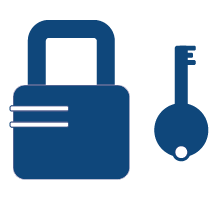Simple Steps for Cybersecurity
Simple Steps for Cybersecurity
 |
We all have a responsibility to protect both College and personal data. These three simple steps are guidelines that can help keep all of our data secure. |
1) Secure Your Devices
-
Leaving your laptop, phone, or tablet unattended is needlessly risky and easy to avoid. Keep your device with you or in a secure location to prevent theft or loss.
-
Set up lock codes and hard-to-guess passwords on your mobile devices to keep your data safe if your device is lost or stolen.
-
Lock, hibernate, sleep, or power off your workstation when you leave your desk. Set your computer to require a password when you return.
2) Keep Secrets
-
Your username, password, and ID number keep your personal information safe. Protect them. Never give anyone your password, and be sure to change to a unique password regularly.
-
Never reply to unsolicited emails that ask for your username, password, or ID number. Be sure that any website where you are entering your information is legitimate and secured using HTTPS. If in doubt, don’t click.
-
If you’re accessing institutional data from off campus, be sure to connect securely using VPN or EZ Proxy.
3) Be Safe with Software
-
Keeping software up to date repairs security vulnerabilities. Academic and Institutional Technology automatically updates college-owned computers, but be sure to regularly install recommended updates on personally owned devices.
-
Install an antivirus program that actively scans your computer for malware.
-
Beware unexpected pop-ups and error messages. Read carefully before clicking on any part of the message.
-
Thoroughly research any program or app before you install it and read all prompts during installation. Some malware or adware is disguised as legitimate programs. Free programs often have adware or other unwanted programs added on.
To learn more about cybersecurity at Wheaton College, visit this series in our Knowledge Base >>